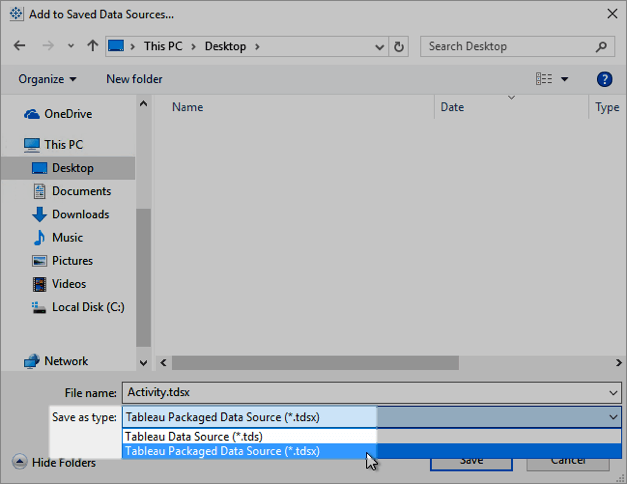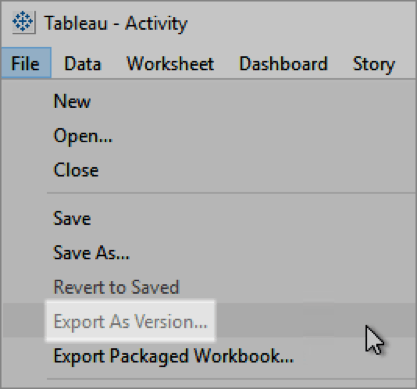Extracts at Hyper speed: What you need to know
You might have heard some of the hype around Hyper. You’re likely wondering: what is it, why do I need it, and how do I get it?
What’s Hyper?
Under the hood, Hyper is the technology that now powers Tableau’s data engine. The data engine is what handles opening, creating, refreshing, and querying your extracts.
Why do I need it?
You need it because you have a lot of data. Or, because you want your extracts to perform better. The data engine has always been good at handling extracts that were just the right size. Now the data engine will work even better at handling big extracts.
How do I get it?
If you’ve installed or upgraded to Tableau Desktop 10.5, then you have Hyper. No separate downloads or upgrades needed.
Now what?
Now, whenever you open, create, refresh, or query an extract in Tableau Desktop 10.5, you’re using Hyper. For the most part, it’s really that simple.
But as with many things, there a few things to pay attention to that didn’t exist prior to version 10.5 especially if you’re refreshing or appending data to extracts in an environment where people are on different versions of Tableau.
Come on board and let’s take a journey through a couple of scenarios to see just what working with Hyper might look like for you.
Create and share an extract using Tableau Desktop 10.5
It’s the new year and I’ve resolved to be more active. To better understand my general activity, I download fitness tracker data and connect to it using Tableau Desktop 10.5.
I eventually want to share this data, so I click Extract, and am prompted to save the extract file. Here’s the first junction with Hyper. Instead of Tableau Desktop 10.5 saving my extract with a .tde extension like in previous versions, it saves my extract with a .hyper extension.

Here’s the second junction with Hyper. Instead of being able to share the extract file itself like in previous versions, using Tableau Desktop 10.5 I now need to share the .tdsx (or .twbx if you’re sharing a workbook) version of my file instead. If I don’t, metadata about my extract, like columns that I’ve renamed to make my data easier to understand, will get lost. So, I go to my extract data source in the Data menu, and then select Add to Saved Data Sources so that I can save my extract as a .tdsx file.

Here’s the next junction with Hyper. I can only share my local extract with someone who’s also on the same version of Tableau as me. While Tableau Desktop 10.5 can continue to open and read .tde extracts, previous versions of Tableau Desktop can’t open and read .hyper extracts. If I try to open a .hyper extract using Tableau Desktop 10.4 (or earlier), I will see the following message:

For the same reason, I can’t use the Export As Version option to downgrade a workbook that uses a .hyper extract. I see the following greyed out menu option when I try to downgrade my workbook:

To work around this issue, I can go to the extract in the Data menu, select Remove to remove the extract, and then save the workbook. Then I can use the Export As Version option to downgrade the workbook and recreate a .tde extract for the workbook using Tableau Desktop 10.4 (or earlier).
Open and update a .tde extract using Tableau Desktop 10.5
My colleague decided to join me on my 2018 resolution journey. While we both want to track our individual activity levels, we thought it would be fun to combine our data and track the success of our resolution together.
My coworker sends me her workbook (.twbx file) that she created right before the new year using Tableau Desktop 10.4. Here’s the first junction with Hyper. Because Tableau 10.5 continues to open and read .tde extracts, I’m able to open up my colleagues workbook and see that we have the same columns of data to confirm that I can I append my extract to hers.
Here’s the second junction with Hyper. When I append data (or do an extract refresh) to a .tde extract using Tableau Desktop 10.5, the append process automatically upgrades the .tde extract to a .hyper extract. I see the following message right after I initiate the append:

I proceed with the append, but will remind my colleague that she’ll have to upgrade to Tableau Desktop 10.5 to use the workbook locally.
Just to get things rolling and show my coworker what we’re starting with, I publish the workbook to my personal project on Tableau Server 10.5 so that she can immediately see our combined data. Here’s the next junction with Hyper. My colleague can connect to a .hyper extract as a published data source from Tableau Desktop 10.4 (or earlier). Alternatively, she can use her browser to sign in to Tableau Server 10.5 to see the workbook I just published.
Learn more
These are just two examples of possible scenarios that you might encounter as you transition to Tableau Desktop 10.5. To read about other common scenarios related to extract compatibility between Tableau Desktop and Tableau Server, check out part 2 of 3 of this blog series: Onboarding your team with Hyper.
For more information about what Hyper is and a more comprehensive look at what to expect with your extracts after upgrading to Tableau Desktop 10.5, see the following:
- Why Use Tableau Data Extracts
- Extract Your Data (Tableau Help)
- Extract Upgrade to .hyper Format (Tableau Help)
- The New Data Engine in Tableau Server (Tableau Server Help)
เรื่องราวที่เกี่ยวข้อง
Subscribe to our blog
รับอัปเดต Tableau ล่าสุดในกล่องข้อความ







